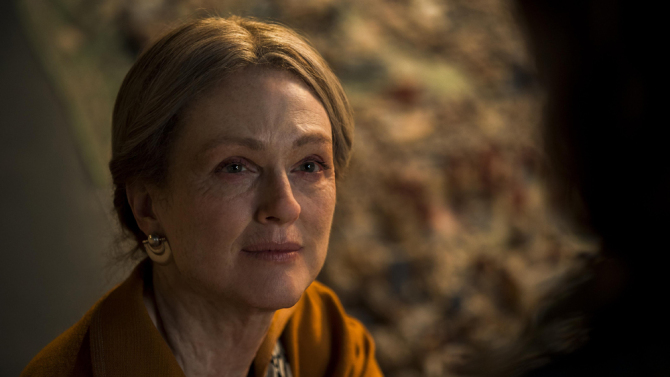
Image Courtesy of Cannes Film Festival
CANNES FILM FESTIVAL 2017
'Wonderstruck' is redeemed by its innovation
By Sydney Cohen, Daily Arts Writer
Amazon Studios

Image Courtesy of Cannes Film Festival
The second day of the Cannes Film Festival opened at 8:30 am with Todd Haynes’s new film “Wonderstruck,” a playful if somewhat contrived view on children, the deaf experience and the magic of history museums. While stuffed with acclaimed American actors including Julianne Moore and Michelle Williams, Wonderstruck failed to inspire but sufficiently entertained.
Wonderstruck oscillates between stories that are parallel in theme but separated by time. The film’s main story takes place in 1979 and follows Ben (Oakes Fegley, “Pete’s Dragon”), a young boy plagued by the recent death of his mother and his continuous nightmares of wolves, who longs to find the identity of his father and understand his past. Ben loses his hearing permanently shortly into the film after being struck by lightning. The other story, set in 1929, follows Rose (Millicent Simmonds), a young deaf girl trapped in a loveless household and obsessed with the silent movies of the era. The stories follow a parallel trajectory: Both protagonists escape their unhappy homes and embark on a journey to New York City, where they search for and find compassion and companionship.
Furthermore, both stories highlight the deaf experience and challenge the notion of communication; as neither character speaks sign language, they must communicate through pen and paper, creating a lagging time between question and answer and subsequently generating suspense and frustration. The film does a great job of spotlighting an often-forgotten disability by celebrating and destigmatizing deafness, reversely constructing a whimsical story of two lost souls who happen to be deaf.
Beyond its characterizations, the film explores deafness through form. Todd Haynes brilliantly tells the cinematic tale of two deaf kids through the form of a silent movie, playing with the conventions of the genre to create multiple layers through which to explore the deaf experience. Rose’s story is told through the satirized silent film, with exaggerated gestures, sounds effects and musical cues to mimic the format of the classic silent picture. Furthermore, the shots in Rose’s storyline are in black-and-white, contributing to the overall Old Hollywood feel. Ben’s story is similarly crafted with the tropes of a silent film, but with a modern twist; his scenes are characterized by jazz and rock music instead of sound effects, with a heightened emphasis on cinematography and lighting to create a more stylized feel. Ultimately, the silent film format creates multiple layers through which to portray the deaf experience, while simultaneously paying respect to an era of cinema equally accessible to the hearing and the hearing-impaired.
Museums also play an important role in Wonderstruck, both as settings and plot-drivers. Museums act as the stage on which characters meet, cultivate friendships, discover passions and work through issues. While the parallel story segments seem disjointed and unrelated for a large portion of the film, the end reveals that the two protagonists are united by the Natural History Museum, both the place where Rose’s and Ben’s fathers worked, and where Ben discovered his father’s identity. The film’s preoccupation with museums extends to its form as well; the origin story of Ben’s father, a diorama maker for the museum, is told through a complex diorama format reminiscent of Laika Entertainment claymation. Again, Haynes exhibits his ability to play with form and construct multiple, self-aware layers of storytelling.
As a whole, Wonderstruck is a charming but formulaic story, with uninspired acting and cheesy clichés. The plot escalates suddenly and without warning, with betrayal or revelations happening too quickly and conveniently to feel genuine. However, Haynes’s innovative use of form saves this film from mediocrity, effectively revealing unexplored themes in a playful and subtle way.